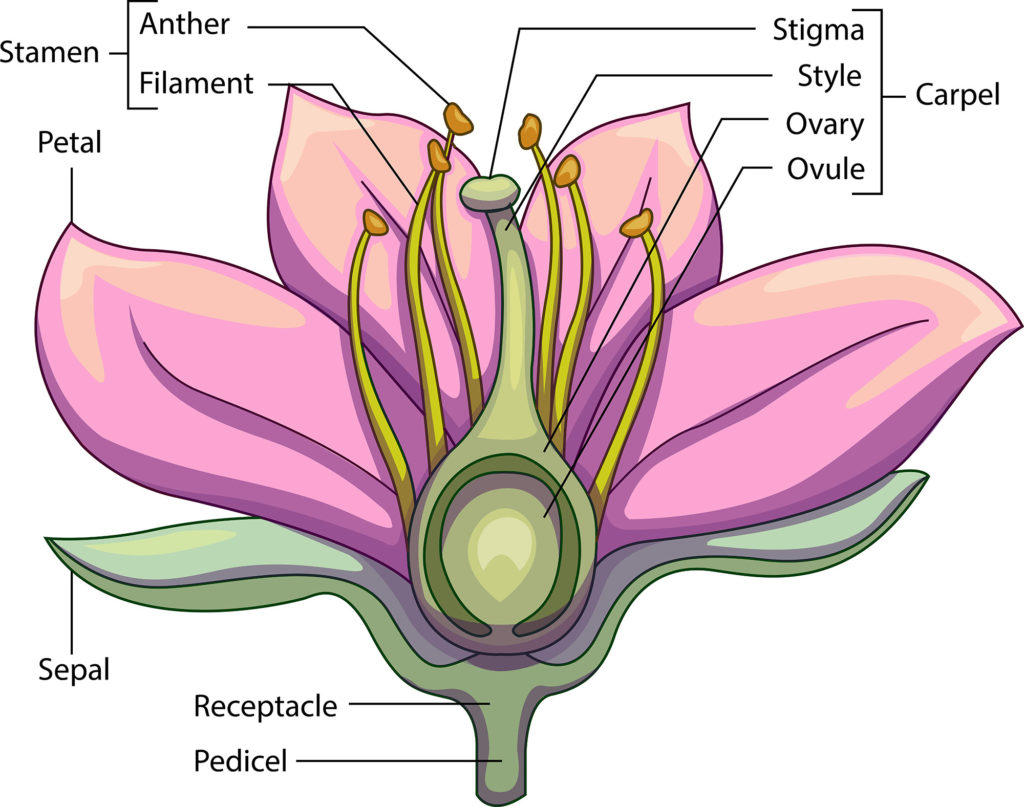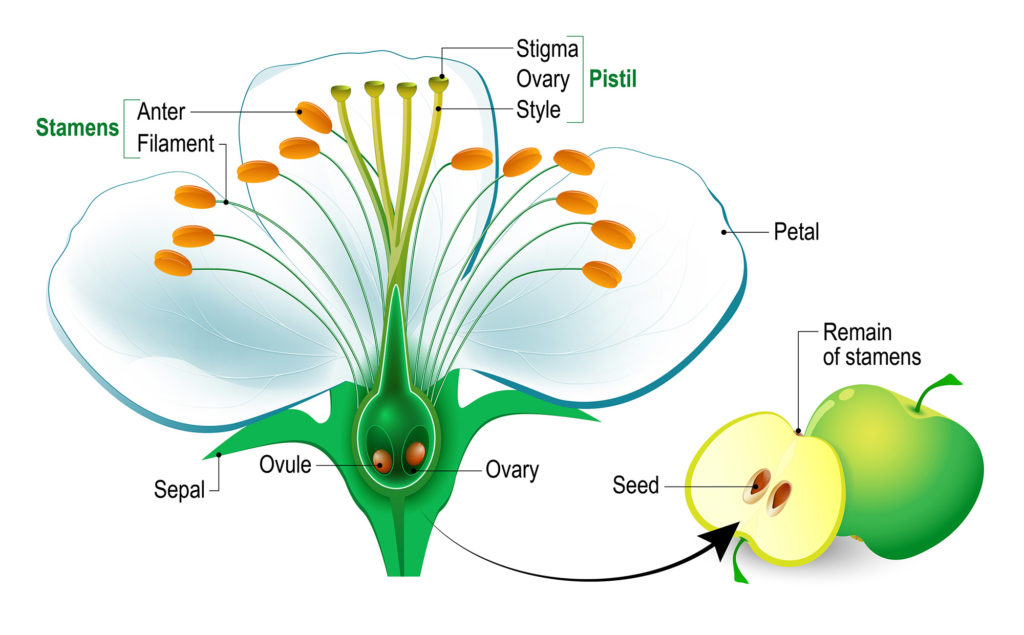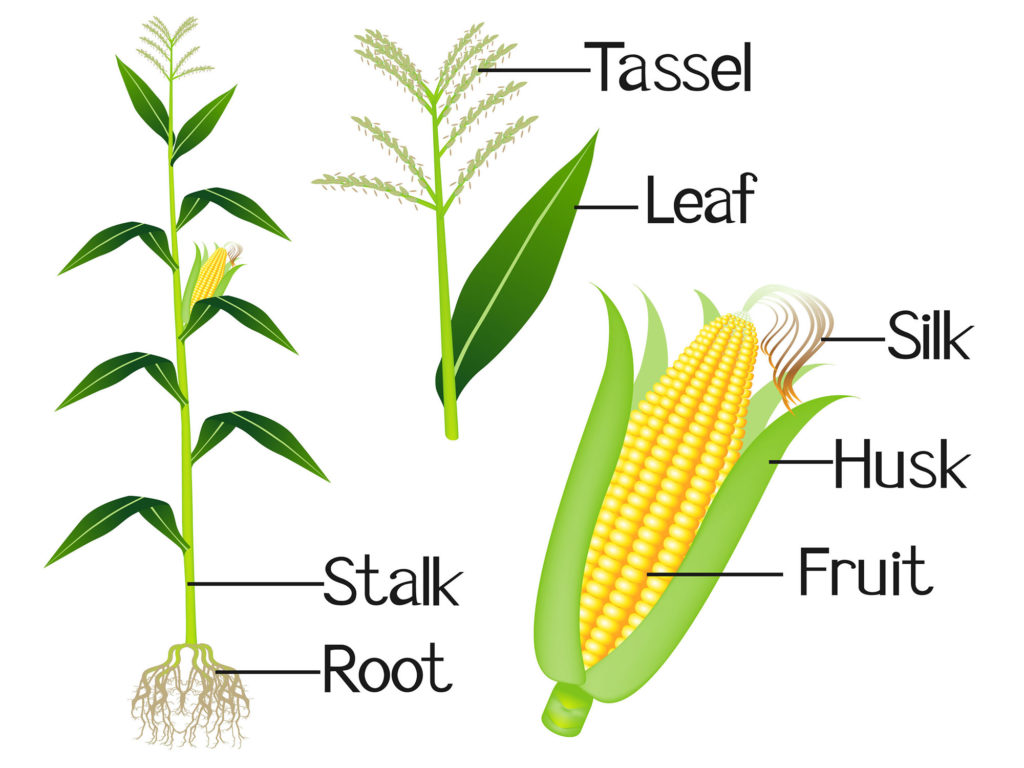
Plant Reproduction Asexual & Sexual


Plant Reproduction Objectives:
-
Describe asexual reproduction and provide examples of plants that can reproduce in this manner.
-
Label various flower structures and their corresponding functions, including the distinction between wind-pollinated flowers and animal-pollinated flowers.
Reproduction produces the next generation of a species. In animals, we are primarily only able to reproduce sexually. Many plants can reproduce both sexually (with eggs and pollen) and asexually.

This is a stem cutting of a Hoya plant that we met early as an example of an epiphyte.
It was placed in a glass of water and is now sprouting roots. This stem can become a new plant that is genetically identical to the plant the stem came from. In a sense, this is a genetic clone.
Here the same process is duplicated with a stem from a rosemary plant. A bit of rooting hormone purchased from a local nursery is speeding up production of roots from the cut stem. This is asexual reproduction because it did not involve reproductive structures, and it did not involve different organisms.


Spider plants, a common house plant often produce small plantlets asexually. This is the spider plant’s most common form of reproduction, although it can also reproduce sexually with flowers. The benefit of asexual reproduction is the ease: no need for pollen from one plant to get to the eggs of another. Also, if the parent plant survived in the microhabitat, its clones likely will too. But there are two big downsides as well.
The plantlets may complete with each other and the parent plant. Also, all of the plants are similar genetically. Sexual production increases variation as different genetic compositions from from sperm and eggs. A plant virus could wipe out all of these individuals at once.

Strawberries have runners, also called stolons. These horizontal stems grow along the ground and asexually produce offspring. These clones are genetically identical to the parent plant.
From the video, how can these strawberry plants stabilize soil?
There is more on strawberry planting on the lab webpage.
Strawberry plants like this wild strawberry can also reproduce sexually with insect-pollinated flowers that produce fruit with seeds.
Although some plants like moss and ferns sexually reproduce with spores and gymnosperms develop seeds within cones; most plants are angiosperms that reproduce sexually with flowers.

Flowers
You had a chance to investigate flowers in the first lab. Depending on the media you made, some of this section may be review. Flowering plant species are classified as A_________. Why are flowers important to plants? If you did not watch this intro video on the week 1 Flowers Lab page, this introduces the significance of flowers.
Answer to above questions: Angiosperms; flowers are how plants sexually reproduce.
Although flowers vary significantly in structure, many share the features in this video. Note: if you did flower structure as part of you flowers lab media piece, these videos may be a refresher.
Lilies are often used to study flower structures because they are complete or “perfect” flowers with all of the basic parts. Lilies are monocot angiosperms, with three petals and three similarly colored sepals.

Stamens are the “male” reproductive structures of the flower that produce the pollen grains. Each stamen consists of a filament and an anther. The filament is a stalk attached to the anther. The anther is where pollen grains are located. Pollen is the equivalent to sperm in human males.
The pistil (also called the carpel) is the “female” reproductive structure of the flower and is made up of three parts. The stigma is where the pollen grains land. The style is below the stigma and connects it to the ovary. The ovary forms the bottom part of the pistil. Inside the ovary are the ovules and inside the ovules are the eggs which, after fertilization, will result in the ovules developing into seeds. At the same time the ovary will develop into a fruit.

To review; after fertilization (pollination), the ovary of the flower becomes the _____ and the ovules become the _____.
Answers: fruit; seeds
Variations in flower structures are often used to identify flowers in the field. Review your understanding of flower structures with this video.
We will have more on the fruits and seeds produced by pollinated flowers in week 5 lab.
Although many significant crops like soybeans and squash are pollinated by animals, grass plants are wind pollinated. Grasses include corn, wheat and rice.
Grass Flowers
Grass plants are not pollinated by animals, so they do not need large, colorful, odorous, or nectar-filled flowers.

In a corn plant, a cluster of male flowers is called a tassel. The male flowers produce pollen which is carried by the wind to female flowers. Pollen falls onto the silks of female flowers, which develop into individual corn kernels. Typically the male and female flowers on a single plant mature at different times, to prevent self-pollination.
We will have more on flowers and pollinators in Module 9.
This is the end of the Plants Guide. This material, along with materials from the Technology Guide and corresponding lectures are on the quiz due by Sunday.

Check your knowledge. Can you:
-
Describe asexual reproduction and provide examples of plants that can reproduce in this manner?
-
Label various flower structures and their corresponding functions, including the distinction between wind-pollinated flowers and animal-pollinated flowers?



